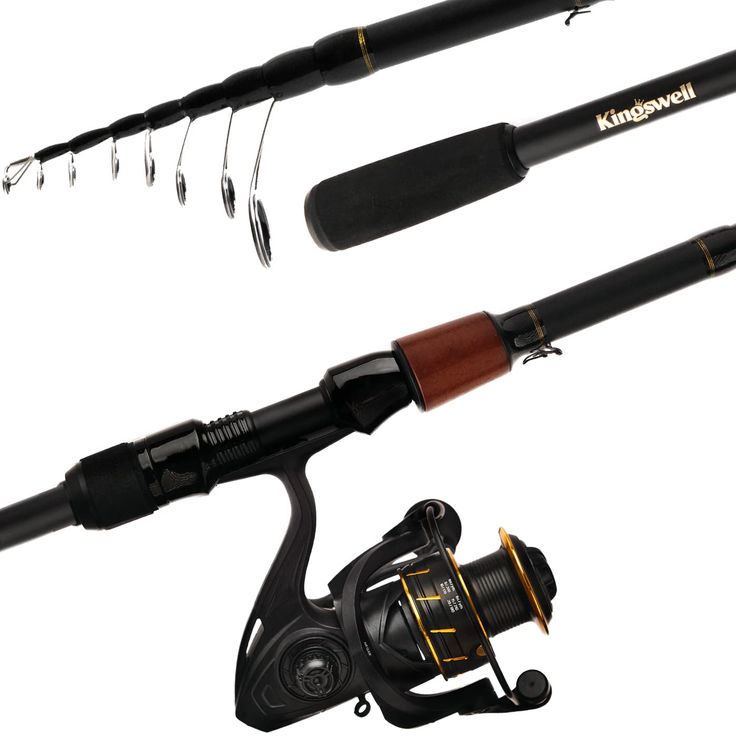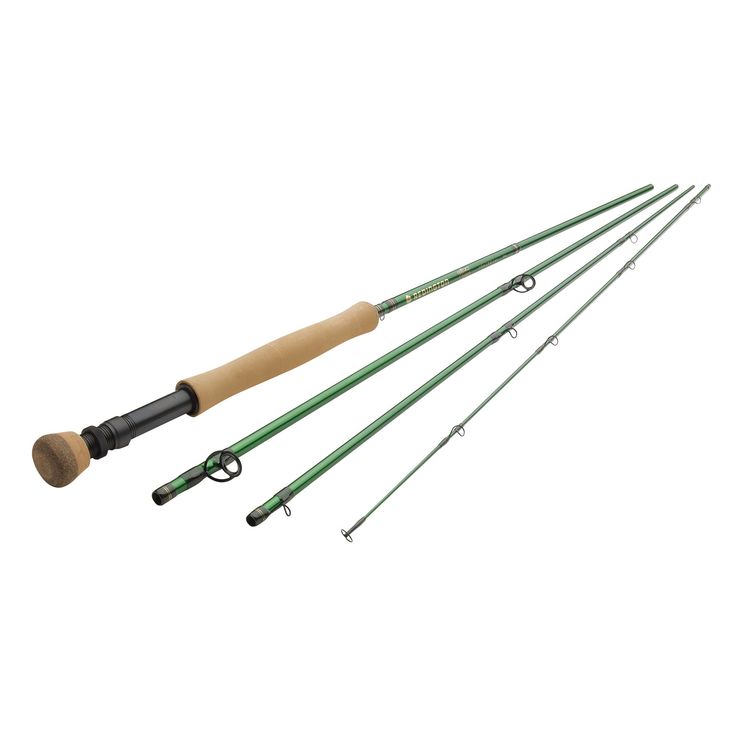Introduction to Fishing Rod Types
What is a fishing rod? Choosing the right fishing rod is crucial for any angler. It changes the game. Rod types differ mainly in design, usage, and the angler’s experience level. Two popular types are spinning and casting rods. This section will help you understand their differences. We will highlight their features. We aim to guide you in finding what suits you best.
A spinning rod works well with spinning reels. Think of it as a versatile buddy for your fishing adventures. It caters to newcomers and adapts to various fishing scenarios. On the flip side, a casting rod, or baitcasting rod, pairs with baitcasting reels. It’s known for precision and control. Hence, it’s the go-to for seasoned anglers pursuing bigger game.
As you read on, you’ll explore their benefits. You’ll learn about their designs. You will also understand key aspects like rod guides, power, and sensitivity. We’ll compare techniques. We’ll discuss price factors. All this information is to help you pick the most suitable rod. So, whether you’re at the start of your fishing journey or looking to upgrade, this guide has got you covered.

Key Features of a Spinning Rod
Spinning rods come with a unique build for ease and multifunction. Their design includes a straight handle and downward-facing guides. Such a setup lets the line off the reel smoothly. No fuss, just efficiency.
Benefits for Beginners and Versatility
Spinning rods shine for those new to fishing. Simple to operate, they cut the learning curve. A bail mechanism controls line flow, unlike the release buttons on casting rods. For a novice, it’s less intimidating.
But versatility is another plus. Spinning rods adapt to various fishing scenarios. From light trout stream work to battling big-game fish offshore. They offer a wide power range, fitting many fishing styles.
Beginners enjoy the easy handling while seasoned anglers value the adaptability. With a spinning rod, you’re well-set for a mix of fishing techniques. It’s a top pick for anglers seeking one rod to handle multiple situations.
Understanding Casting Rods
Casting rods are built for accuracy and control. These qualities appeal to anglers with some experience. Designed to pair with baitcasting reels, casting rods offer a different dynamic compared to spinning rods. Their structure gives anglers a tactical advantage when seeking out larger fish.
Design and Performance for Experienced Anglers
Casting rods favor the seasoned fisher. They feature upward-facing guides which work to prevent line tangles during a cast. This design requires skill to use effectively. Precision casting with these rods can land big fish, but practice is key.
These rods have a stiffer feel, providing strength for reeling in heavier catches. They also offer superior sensitivity. This allows anglers to detect subtle bites. Such features make casting rods a solid choice for targeting trophy fish. The durability and performance of casting rods make them suited for challenging fishing conditions.

Comparing Rod Guides and Reel Placement
The setup of rod guides and reel placement are key to a rod’s performance. For a spinning rod, the guides — those loops the line goes through — face downward. This lets the line come off the reel in smooth, clean loops. Spinning reels hang below the rod, making it easy for beginners to use.
Casting rods, in contrast, have guides that look up. This keeps the line from tangling when you cast. The reel sits atop the rod, offering a balanced feel for precise control. It’s clear that manufacturers thought about avoiding tangles and ensuring accurate casts when designing casting rods.
Both placements have usages that suit different fishing styles. Beginners might find the reel placement on spinning rods more intuitive. The rod feels natural in your hand when reeling in a catch. Experienced anglers might prefer the setup of casting rods. The reel’s top position offers more control, crucial for big game fishing.
In summary, reel placement and rod guide orientation are important. They affect how you cast and control the rod. Beginners may lean toward spinning rods for ease of use. Anglers seeking greater control and precision might opt for casting rods. You should consider these features when picking a rod. Your choice can make a big difference in your fishing success.
Evaluating Rod Power and Sensitivity
When picking a fishing rod, power and sensitivity are critical. How do these features differ in spinning and casting rods?
Rod Power: Strength to Fight the Fish
Power in rods means strength. It’s about how much a rod can bend under pressure. Spinning rods vary in power. They range from ultra-light for tiny fish to heavy-duty for big ones. This makes them versatile companions, regardless of the fish size.
In comparison, casting rods often have more power. They’re stiffer. This means they’re better for reeling in large, strong fish. When you’re aiming to catch bigger, heavier fish, a casting rod’s strength is your ally. But remember, with more power comes less flex. So, choose depending on your target.
Sensitivity: Feeling Every Bite
Sensitivity refers to feeling the fish’s bite on your line. Spinning rods are sensitive. They let you feel even tiny nibbles, which is great for detecting smaller fish.
Casting rods, while powerful, also have good sensitivity. They help experienced anglers feel light bites from large fish. This is vital in challenging conditions where every sensation counts.
In essence, if you need a strong, sensitive rod, a casting rod is key. For varied situations and fish sizes, a sensitive spinning rod could be your best pick. Think about what you’ll catch and where you’ll fish. This will guide you to the right rod choice. Your decision impacts your comfort on the water and your success in landing fish.

Tackling Various Fishing Techniques
When it comes to fishing techniques, rod choice is crucial. Casting and spinning rods support different methods.
Spinning Rods: A Range of Techniques
Spinning rods offer great flexibility. They work well for various methods, from casting to trolling. Beginners find them handy for simple casting techniques. They are excellent for light bait and lures. These rods also perform well in jigging, where rhythmic motions attract fish.
Suitable for both freshwater and saltwater, spinning rods help in different environments. You can use them in quiet creeks or open seas. Their versatility is a top advantage for anglers who enjoy multiple fishing styles.
Casting Rods: Specific Technique Mastery
Casting rods excel in precision techniques. They’re perfect for flipping and pitching near heavy cover. Anglers use them for accurate lure placement. This reduces snagging in dense areas. Mastery in these methods requires practice but offers great rewards.
Experienced anglers prefer casting rods for specific fishing situations. These include throwing heavy lures or targeting large fish. With these rods, you can control your cast’s distance and accuracy more effectively.
In essence, your preferred fishing techniques should influence your rod choice. Spinning rods give you flexibility for various methods. Casting rods allow for technique-specific mastery. Think about what skills you want to develop. Consider the type of fishing you do most. This will guide you in choosing the ideal rod for your angling pursuits.
Price Considerations Between Rod Types
When considering a new fishing rod, price matters. Deciding between spinning and casting rods often comes down to budget.
Spinning Rods: Affordable and Cost-Effective
Spinning rods are generally less expensive. Their design is simpler, which makes them more budget-friendly. Beginners find their cost appealing. Affordable models are available. They still provide a range of features and size options. This makes them a wise choice for those just starting out or with limited funds.
Casting Rods: Investing in Quality and Technique
Casting rods, on the other hand, can be pricier. They tend to use higher quality materials. Their construction caters to specific skills and larger fish. For those who invest time in mastering casting techniques, the cost reflects the quality. However, prices vary. There are mid-range options for those looking to step up their game without breaking the bank.
The price of a fishing rod can also be impacted by brand reputation and specialty features. Some rods are designed with advanced technology. These can command higher prices. Always consider how the rod fits your experience level and fishing needs. Don’t overspend on features you won’t use. To find the best value, balance your budget with your fishing goals. Whether you choose a spinning or casting rod, ensure it’s a worthy addition to your fishing gear.
Choosing the Right Rod for Your Fishing Goals
Selecting the correct rod is pivotal to your fishing success. Here’s how to align your choice with your objectives:
Understanding Your Fishing Environment
The environment shapes your decision. Freshwater and saltwater demand different rod traits. Assess the water you’ll fish in. Lighter spinning rods suit tranquil streams. Heavier casting rods thrive in rough sea conditions.
Identifying the Fish Species
Know your target. Small fish calls for a sensitive, light rod. Big game asks for a sturdy, powerful casting rod. Match the rod power to the fish size for the best experience.
Weighing Your Skill Level
Your expertise is key. New anglers should go for beginner-friendly spinning rods. They’re easy to handle. Experienced fishers might lean towards the precision and strength of casting rods.
Matching Techniques With Rod Types
Your technique matters. Want to cast light lures? A versatile spinning rod is ideal. Need to pitch into tight spots? Opt for a precise casting rod. Pick a rod that complements your favorite fishing methods.
Balancing Quality and Price
Consider cost and quality. Spinning rods are budget-friendly and offer good features. Casting rods, pricier, cater to specialized angling. Your investment should reflect your commitment to fishing.
Trying Before Buying
If possible, try various rods. Handling a rod gives you the best feel for its fit. It aids in making an informed decision. Your comfort with the rod is crucial.
In summary, the right rod aligns with your goals, environments, targeted fish, skill level, techniques, and budget. Take time to ponder these factors. The perfect fishing rod is the one that meets your specific needs and helps you enjoy fishing to the fullest.
Conclusion: Making Your Selection Work for You
As we wrap up, understanding the key differences between spinning and casting rods is crucial. It sets you up for success. As you’ve learned, choice matters. It impacts your performance and affects your enjoyment on the water. A right decision is shaped by many factors – from skill level to fishing environment.
Remember the basics. Spinning rods are great for beginners. They’re easy to use. They adapt to different fishing styles. They’re also budget-friendly. On the other hand, casting rods suit the seasoned angler. They’re ideal for targeting big fish. They offer precision and power but usually come at a higher price.
Think about where you’ll fish and what you’ll catch. Choose a rod that matches your preferred techniques. Also, weigh the cost against features. Aim for the best value. And if you can, try different rods before buying one. That way, you’ll feel sure about your choice. Remember, there’s no one-size-fits-all. The right rod for you is personal and should fit within your unique fishing aspirations.